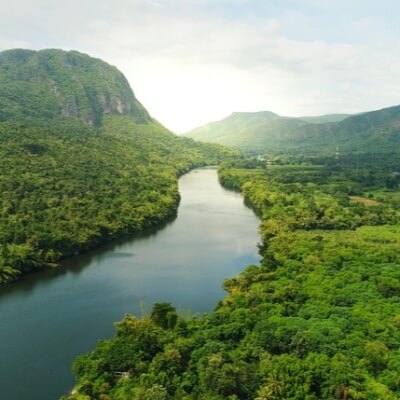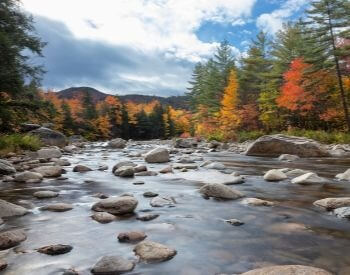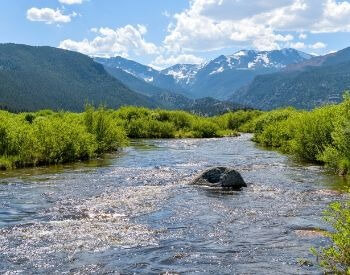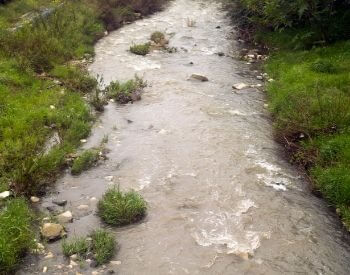
This web page contains river facts for kids and is an excellent resource for anyone of any age looking to learn about rivers. Our goal is to provide you with accurate, up to date facts about the Earth’s rivers. In addition to facts about rivers, we provide additional resources to help you with your research on these important bodies of water.
The river facts below will help you learn about rivers, how big a river can be, what is the largest river in the world, how rivers support the water cycle and other river related facts. We hope these river facts are interesting and help you learn more about this important part of the Earth’s water cycle.
If any of the below river facts are inaccurate, please contact us and let us know.
25 River Facts for Kids
- A river is a watercourse that flows into a lake or the ocean via gravity.
- The water in a river starts in a higher elevation and flows downwards to sea level.
- The water flowing through a river usually flows into the ocean or a lake.
- Rivers are fueled by precipitation (rain and snow) and/or snowmelt.
- Rivers are an important part of the hydrological cycle, also known as the water cycle.
- A river typically contains freshwater. However, as a river starts to approach a mouth that leads into the ocean the water composition will become brackish.
- Rivers are a source of recreational activities for humans.
- Rivers are a source of drinking water for billions of humans. An example is the Colorado River in the United States of America. It supplys watere to more than 40 million people.
- Humans use rivers for fishing, swimming, boating and many other water activities.
- The length of river can vary greatly, some are only a few hundred, while others are thousands of miles.
- The longest river in the world is the Nile River with a length of 4,130 miles.
- Some dispute the Nile River is the longest river and claim it’s the Amazon River. The dispute is based on how the length of a river is measured.
- The shortest river in the world is the Roe River with a length of 201 feet.
- The depth of a river varies along its course. Some rivers may only be a few feet deep in one section, while in another section in can be hundreds of feet deep.
- The deepest river is the Congo River, with one section reaching a depth of over 700 feet.
- Some rivers are used to define borders between countries, like the Rio Grande River in North America.
- A small river is sometimes referred to as a stream or creek.
- A small river or creek that feeds another larger river is called a tributary river.
- Many different types of fish, aquatic plants and invertebrates call a river their home.
- A few fish species common in rivers are trout, crappie, bluegills and bass (largemouth and smallmouth).
- A few aquatic plant species common in rivers are cattails, bulrushes and algae.
- A few invertebrate species common in rivers are crayfish, insect larvae and snails.
- Water pollution is a serious problem with many rivers around the world.
- Rivers are typically polluted from agricultural runoff and wastewater dumping. Since the water from a river typically dumps into the ocean, those same sources end up also polluting the ocean. One big source of pollutants in the ocean is the Mississippi River and the Hudson River.
- One of the most polluted rivers in the world is the Ganges River, which flows through India and Bangladesh.
Pictures of Rivers



Additional Resources on Rivers
- Rivers, Streams and Creeks – Learn more about rivers, streams and creeks on the USGS website.
- About Rivers – Find more facts and information about rivers on the National Geographic website.
- What is a River – Watch this YouTube video by MonkeySee to learn what a river is.
- River – Britannica – Explore rivers, streams and creek on the Britannica website.
